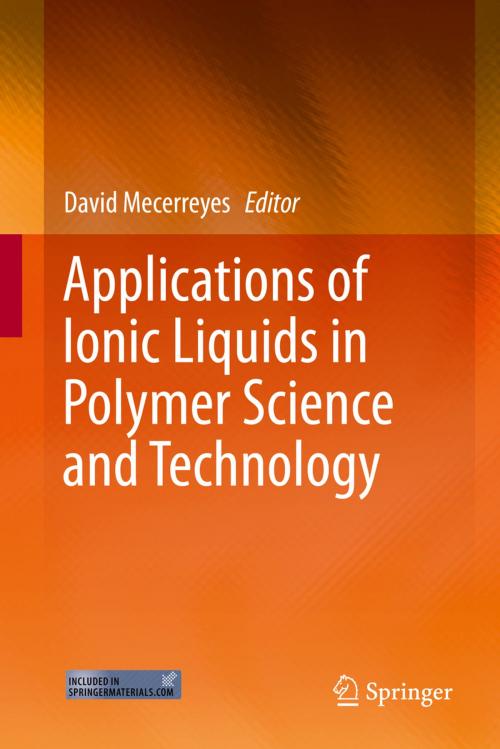Applications of Ionic Liquids in Polymer Science and Technology
Nonfiction, Science & Nature, Technology, Textiles & Polymers, Science, Physics, Mechanics| Author: | ISBN: | 9783662449035 | |
| Publisher: | Springer Berlin Heidelberg | Publication: | April 8, 2015 |
| Imprint: | Springer | Language: | English |
| Author: | |
| ISBN: | 9783662449035 |
| Publisher: | Springer Berlin Heidelberg |
| Publication: | April 8, 2015 |
| Imprint: | Springer |
| Language: | English |
This book summarizes the latest knowledge in the science and technology of ionic liquids and polymers in different areas. Ionic liquids (IL) are actively being investigated in polymer science and technology for a number of different applications. In the first part of the book the authors present the particular properties of ionic liquids as speciality solvents. The state-of-the art in the use of ionic liquids in polymer synthesis and modification reactions including polymer recycling is outlined. The second part focuses on the use of ionic liquids as speciality additives such as plasticizers or antistatic agents. The third part examines the use of ionic liquids in the design of functional polymers (usually called polymeric ionic liquids (PIL) or poly(ionic liquids)). Many important applications in diverse scientific and industrial areas rely on these polymers, like polymer electrolytes in electrochemical devices, building blocks in materials science, nanocomposites, gas membranes, innovative anion sensitive materials, smart surfaces, and a countless set range of emerging applications in different fields such as energy, optoelectronics, analytical chemistry, biotechnology, nanomedicine or catalysis.
This book summarizes the latest knowledge in the science and technology of ionic liquids and polymers in different areas. Ionic liquids (IL) are actively being investigated in polymer science and technology for a number of different applications. In the first part of the book the authors present the particular properties of ionic liquids as speciality solvents. The state-of-the art in the use of ionic liquids in polymer synthesis and modification reactions including polymer recycling is outlined. The second part focuses on the use of ionic liquids as speciality additives such as plasticizers or antistatic agents. The third part examines the use of ionic liquids in the design of functional polymers (usually called polymeric ionic liquids (PIL) or poly(ionic liquids)). Many important applications in diverse scientific and industrial areas rely on these polymers, like polymer electrolytes in electrochemical devices, building blocks in materials science, nanocomposites, gas membranes, innovative anion sensitive materials, smart surfaces, and a countless set range of emerging applications in different fields such as energy, optoelectronics, analytical chemistry, biotechnology, nanomedicine or catalysis.















